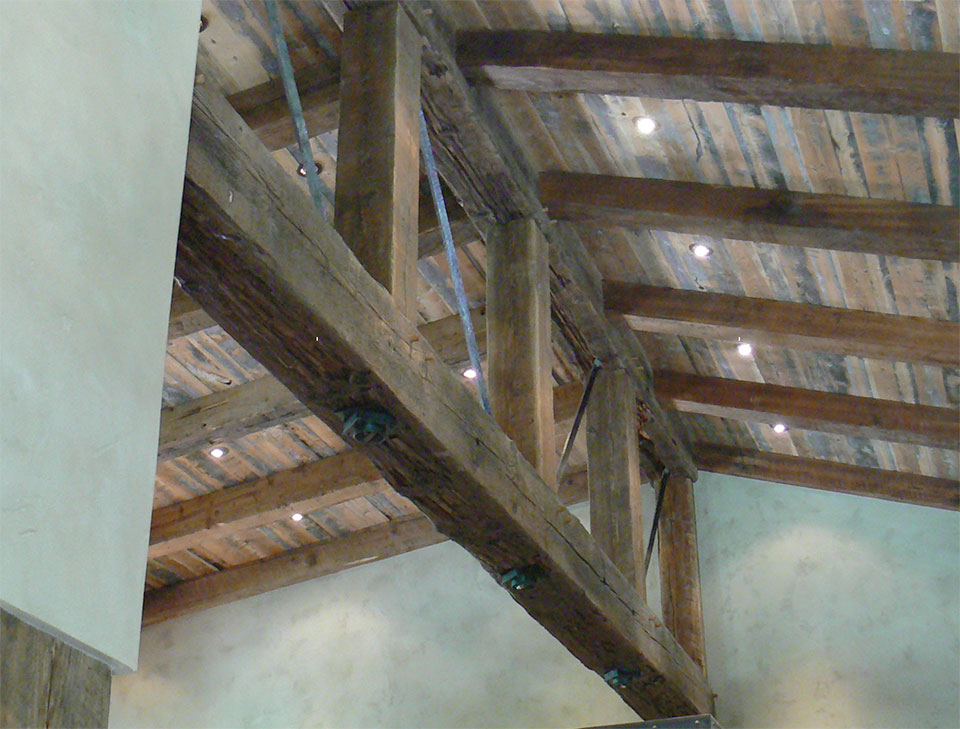Anything is possible
Big Timberworks has never met a truss they can’t build
By Walt Burns
“We provide our services and products all over the country. In fact, we’ve done jobs in over 40 different states. Everything is fabricated here in our Gallatin Gateway shop.”
–Hudson Hart, Co-CEO, Big Timberworks
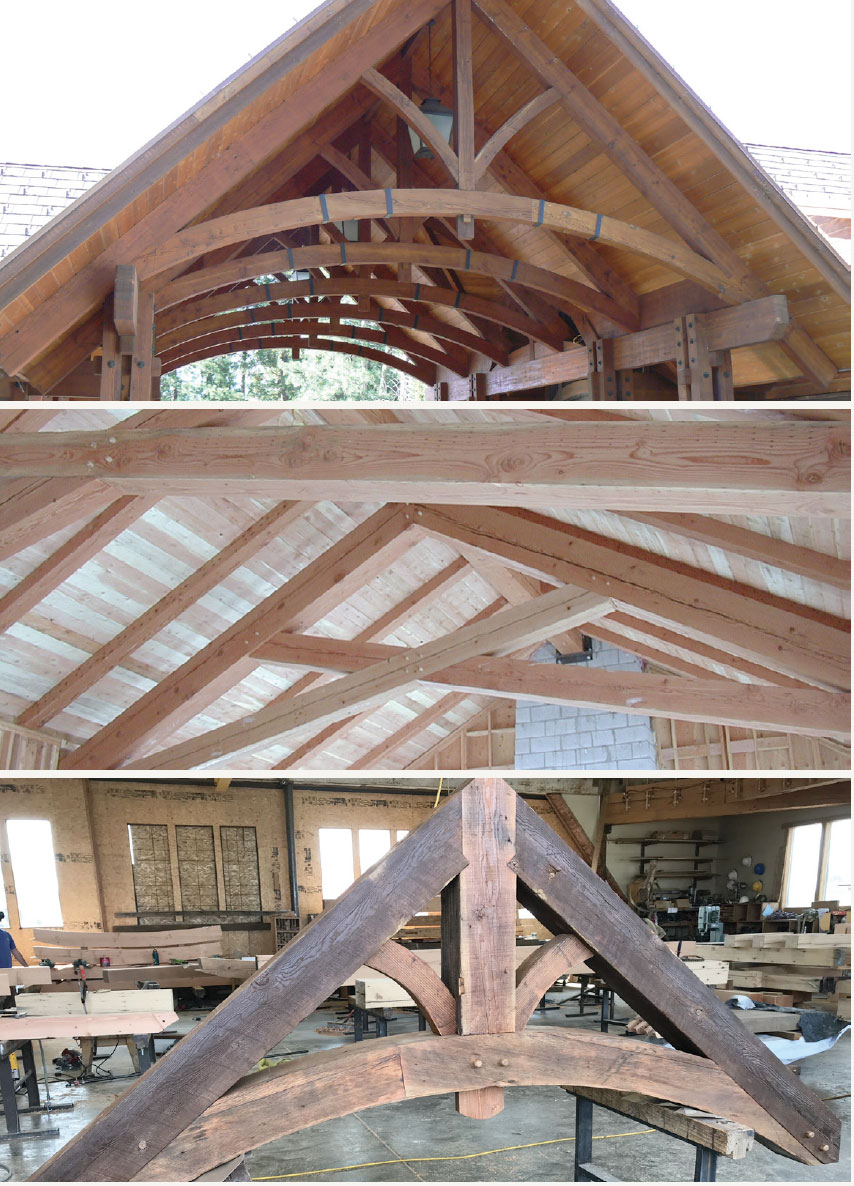
Montana means different things to different people. The romance of the mountains. The allure of vast, open spaces. Admiration of the independent spirit that serves almost as a prerequisite for living here. Some of us are lucky enough to call Montana home. But it’s no surprise that there is an appeal and desire by anyone, no matter where they live, to connect with as much of Montana as they can.
Fortunately, there is Big Timberworks in Gallatin Gateway, Montana. A timber framing operation accompanied by a fine woodworking shop and metalworks, Big Timberworks not only goes about the business of creating breathtaking building elements in wood and metal infused with the essence of Montana, they are also capable of shipping those items throughout the country.
“We provide our services and products all over the country. In fact, we’ve done jobs in over 40 different states,” explains Hudson Hart, Co-CEO at Big Timberworks. “Everything is fabricated here in our Gallatin Gateway shop—pre-fit, pre-finished, packaged, and shipped to the builder. In cases where it’s necessary, we are happy to send a crew for installation as well.”
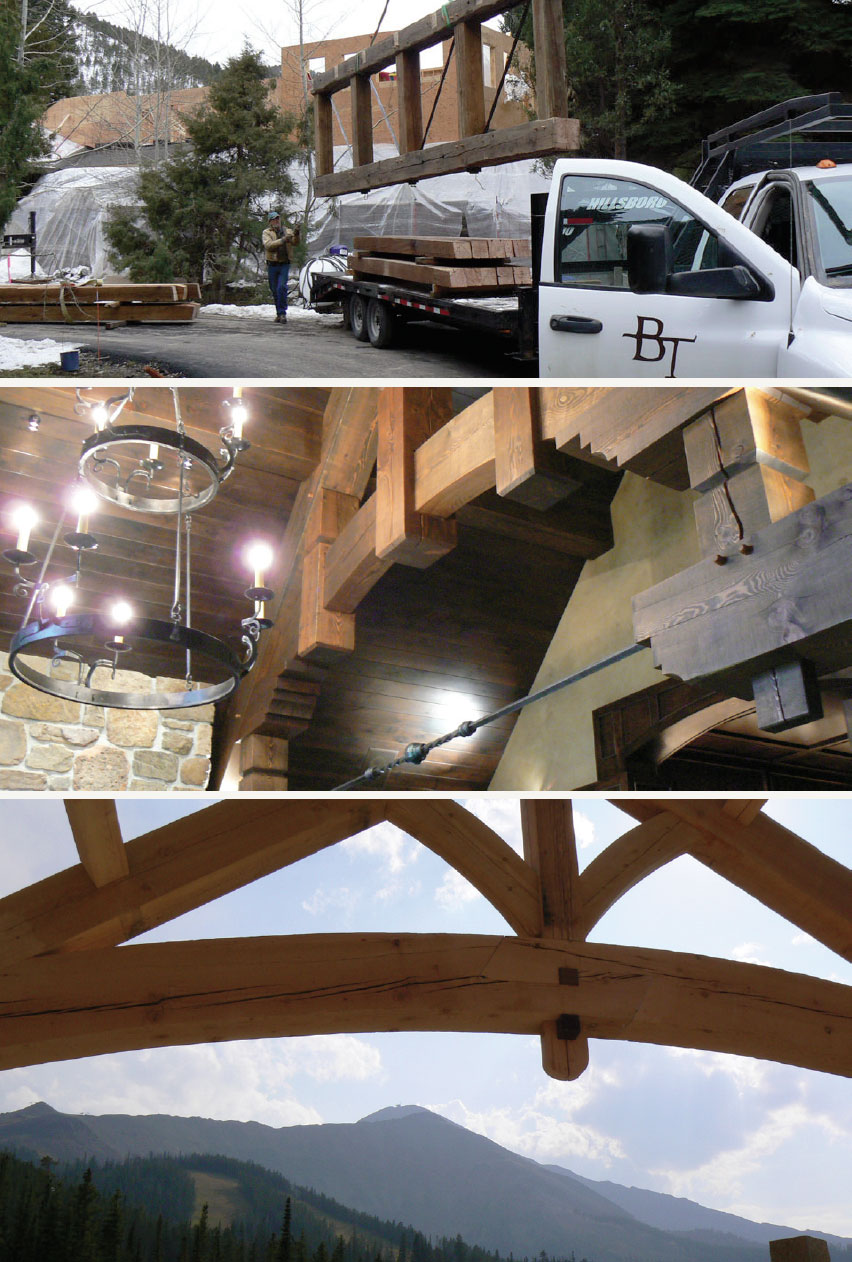
When it comes to spreading a little taste of Montana out into the world, two of the products Big Timberworks is using to do that are timber trusses and box beams. Both embody the precision and craft that are hallmarks of all the work that comes out of their Gallatin Gateway shop.
“Everything we do is specifically related to a particular job and that job site,” says Hart. “We make it easy on the contractor. We’re thorough with our shop drawings and we build exactly what we show in the drawings. What arrives on the job site is exactly what the contractor is expecting and it fits into the project exactly as they expected. It’s easy. We do everything we can to make it easy for all the parties involved.”
The level of custom exceeds what many might expect from a timber framer. There is an on-site metalworks shop after all. Metal connections needed to resolve structural issues can be made custom to the project. Nothing is off the table. Hart says, “Whether the connections are concealed within the timbers or are architectural features where you see them in the finished product, we have capabilities a lot of timber framing companies simply can’t provide since we have all of these facilities in-house.”

“Reclaimed wood is dry and stable. The joint is going to stay put from the day we build it to 10 years down the road.”
–Hudson Hart, Co-CEO, Big Timberworks
Basically, Big Timberworks can build any truss you need. A large part of the appeal of Big Timberworks is their proficiency with reclaimed wood. They’ve been doing this a long time and it shows. The majority of reclaimed wood Big Timberworks uses is commercially salvaged Douglas fir. Hart explains, “These are timbers that have come out of old warehouse structures or old army buildings, or even old shipyards. Back in the ‘30s, ‘40s, and ‘50s all the steel was going into the war effort, so if they were going to build a big warehouse in Chicago they would put a bunch of Doug fir trees on a train and build the structure out of timber. Our founder, Merle Adams, had the contact with people who were exploring uses of this wood so we started using it back in 1990. We were one of the first companies in the Gallatin Valley—maybe even all of Montana—to use it. It’s super high-quality material. That old timber is cut from the old-growth forest so it has really dense fiber and it was extremely cheap. In fact, initially you could get the wood for free at demolition sites. You just had to pay for a truck to get it to you. The demo contractor was ecstatic. Well, it’s not free anymore, but it’s still extremely plentiful. We buy it from both coasts and everywhere in between.”
“Reclaimed wood is dry and stable,” Hart continues. “The joint is going to stay put from the day we build it to 10 years down the road. It’s going to look the same, so from an aesthetic standpoint that’s a highly desirable feature. At the same time, we’re using material we know was not cut green out of the forest, so there’s the sustainability benefit as well.”
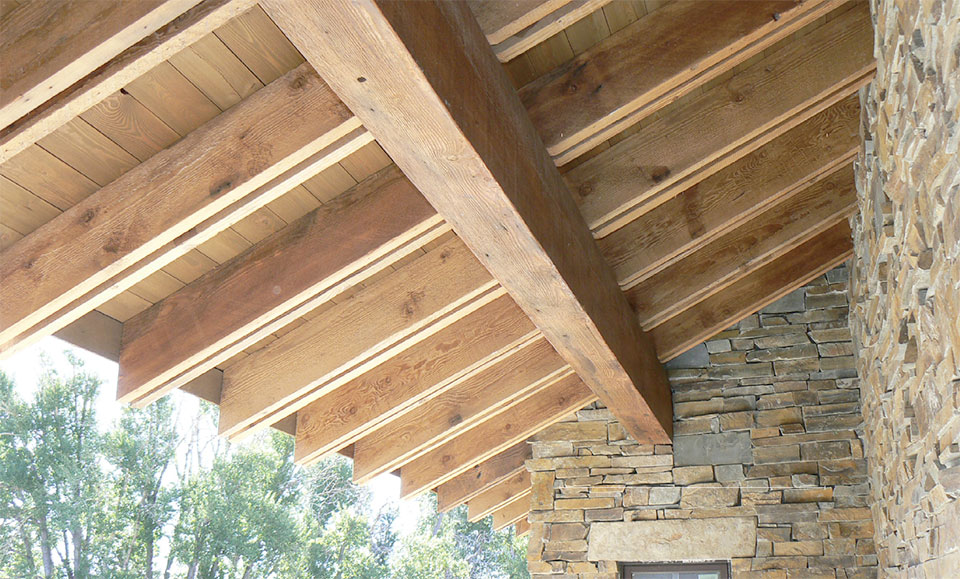
Along with the structural advantages of reclaimed Douglas fir, it’s also beautiful—which is where its value for box beams comes into play. Box beams have always been a part of the product offering at Big Timberworks, but with progression to more modern architectural lines and lower-pitched roofs, it has become even more significant. “We made some dramatic changes in our tooling to be able to do box beams. We have great material available to do box beams of significant lengths and we have the ability to pre-fabricate these box beams and send them to a job site for a contractor to install,” says Hart.
As with everything that bears the Big Timberworks name, the box beams coming out of the shop reflect a vision of fine craftsmanship. Timbers are cut on a bandsaw and bookmatched to align the grain. This technique is how you build high-quality acoustic guitars—not necessarily architectural pieces. Ask anyone at Big Timberworks and you’ll find they don’t make a big distinction between the two.
As box beams continue to become a bigger part of the business at Big Timberworks, Hart is seeing them used in more and more applications. “They’re an appropriate product for new construction but they’re also excellent for remodels. Perhaps someone has a space they want to update and make it look like a beam ceiling. We do a lot of coffered ceilings, for example, on remodels. It’s not difficult to remodel with a timber look because the box beams themselves are quite lightweight, so you don’t need to add structure to the existing building to carry the load of the box beams.”
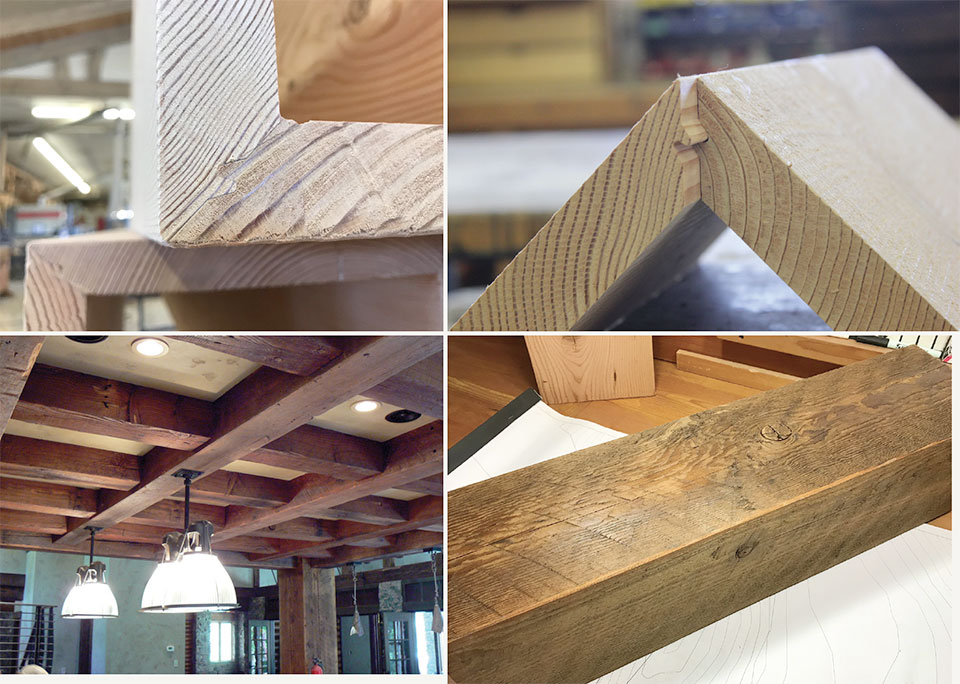
“We made some dramatic changes in our tooling to be able to do box beams. We have great material available to do box beams of significant lengths and we have the ability to pre-fabricate these box beams and send them to a job site for
a contractor to install.”
–Hudson Hart, Co-CEO, Big Timberworks
No matter how wonderful the material is, at the end of the day, turning it into an exquisite product is the function of the people involved. Big Timberworks is an employee-owned co-op with 13 owners. “Our average longevity is almost 16 years and I’m really proud of the fact that people want to stay here and work with us,” Hart adds.
When you put the right materials into the hands of the right people the result is generally something special. Such is the case at Big Timberworks. And the best part—they deliver.
